Amsterdam is the capital and most populated city in the Netherlands, which is interchangeably known as the country of Holland. This historic city lies within the Dutch province of North Holland and is often called the “Venice of the North” because of its extensive network of canals, a UNESCO World Heritage Site. Established in the late 12th century as a fishing village, Amsterdam is located at the head of the River Amstel, which flows northwards from Drecht, in the province of South Holland. Only after the river was dammed to prevent flooding did Amsterdam derive its name from “Amstel” and “dam.” By the dawning of the Dutch Golden Age in the 17th century, the thriving, affluent city was the most important shipping port in the world. Today, after four centuries, the Amsterdam/Rotterdam Port remains one of the busiest ports in the world—and the only one of the top 10 that is not in the Far East.
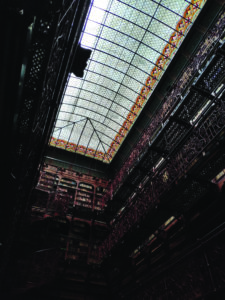
Amsterdam also was the leading commercial and financial center in the world during the century-long Dutch Golden Age and remains one of the most important financial centers in the world today, ranking 17 on the Global Financial Centres Index (GRCI) in 2021—up a staggering eleven places from the previous year to emerge as Europe’s top share trading venue. In fact, the Amsterdam Stock Exchange is considered the oldest “modern” securities market stock exchange in the world. Among the Fortune Global 500 headquartered in the city are: the multinational oil and gas supermajor, Royal Dutch Shell; Philips, one of the largest electronics and health technology companies in the world; the investment holding company Exor, controlled by Italy’s Agnelli family, which owns significant stakes in Fiat Chrysler and Ferrari; and the ING, the financial services group. It is speculated that British tycoon Sir Richard Branson plans to list his first European blank-check company on the Amsterdam stock exchange in the next few months rather than The Bourse in London, where his Virgin Group empire is based. After London, Paris, Frankfurt, and Barcelona, Amsterdam is considered by global consultant Cushman & Wakefield the best European city to locate an international business. Against this cultural backdrop, one of the most beautiful and affluent cities in the world has evolved. But for the interruption of the two world wars—Amsterdam continues to grow and prosper.
Today, the medieval and colonial period grachten (canals) make up the heart of the city. Two-thirds of the hotels located in the city center are rated four- or five-stars and are among the finest in Europe. Shopping in Amsterdam offers the gamut, from its best-known, high-end department store, De Bijenkorf (founded in 1870) to the small, high-end specialty shops that line the streets of P. C. Hoofstraat and Cornelis Schuytstraat in the vicinity of Vondelpark; Kalverstraat, in the heart of the city, Negen Straatjes and its diverse assortment of privately owned boutiques; and the specialty shopping districts of Haarlemmerstraat and Haarlemmerdijk, where you can buy everything from foods and candy, lingerie, books, home furnishings, and bicycles.
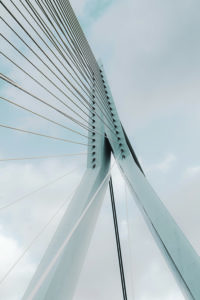
The Rijksmuseum is the most important museum in Amsterdam and the repository of the largest and most important collection of 17th century Dutch masters in the world. Here, on display, is Rembrandt’s masterpiece, The Night Watch (1642) and Jeremiah Lamenting the Destruction of Jerusalem; The Wedding Portrait of Isaac Massa and Beatrix van der Laen, by Frans Hals, The Kitchen Maid and Woman Reading a Letter, by Johannes Vermeer, The Battle of Waterloo, by Jan Willem Pieneman, The Merry Family, by Jan Steen, The Windmill at Wijk bij Duurstede, by Jacob van Ruisdael, Serenade by one of the first-known women artists, Judith Leyster, and works by Bartholomeus van der Helst, Ferdinand Bol, Albert Cuyp, and Paulus Potter. Also on display at the Rijksmuseum is the singularly most important collection in the world of Delftware (also known as “Delft Blue, or Delfts blauw), the blue-and-white, tin-glazed earthenware pottery inspired by Chinese porcelain that took root in Holland around 1600 and has since developed great renown for both its beauty and collectability. First opened in 1885, the Rijksmuseum underwent a ten-year, €375 renovation between 2003 and 2013. Today, approximately 2.5 million visitors annually come to see the more than one million works of art and artifacts housed in the museum.
Vincent Van Gogh (1853-1890) lived in Tilburg where, as a 13-year-old boy, he took his first drawing classes before moving to the village of Nuenen, in the south of Holland in 1883 with his parents before moving to France in 1886 to live with his devoted brother, Theo. There he produced some of his most monumental paintings. The Van Gogh Museum in Amsterdam is nearby, where resides the largest collection of Van Gogh paintings—including the famed The Potato Eaters—as well as The Yellow House (1898), his self-portrait of 1888, Almond Blossoms (1890), and his most famous work of all, Sunflowers (1889), plus drawings and letters; work by his friend, painter Paul Gauguin: his portrait of Van Gogh painting Sunflowers, The Painter of Sunflowers (1888), and art of his contemporaries—and has as many visitors each year as the Rijksmuseum. In 2019, the Van Gogh Museum launched the Meet Vincent Van Gogh Experience, an immersive, technology driven experience which has received a tremendous reception as it tours around the world.
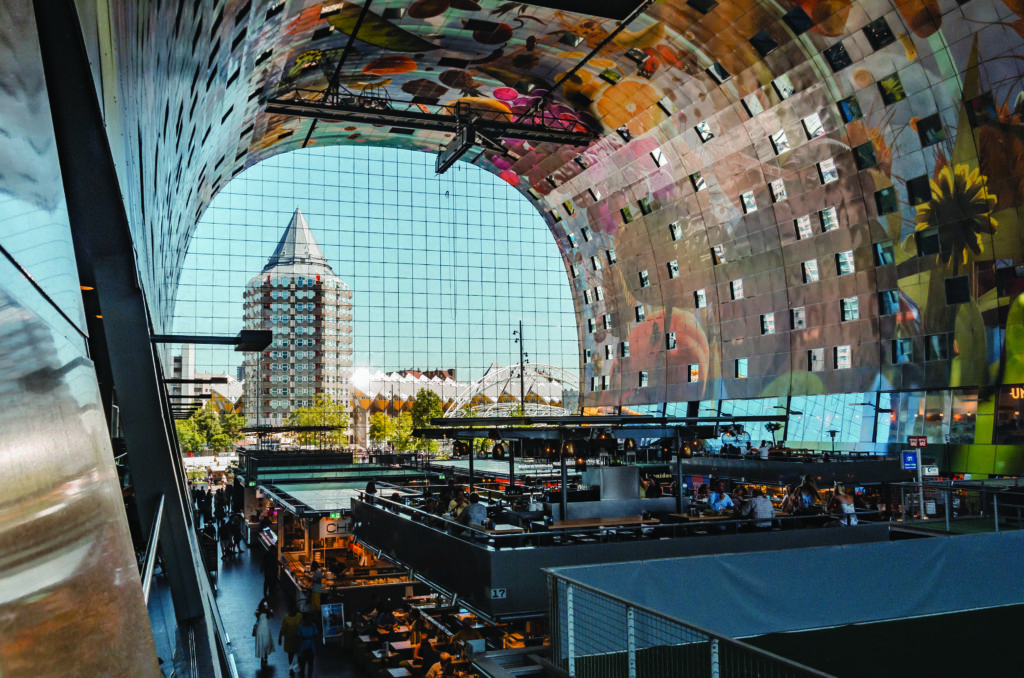
Also among Amsterdam’s many museums is the Museum het Rembrandthuis (Rembrandt House), where Rembrandt lived and worked from 1639 to 1658; one of the city’s oldest museums, Museum Ons’ Lieve Heer op Solder, in the heart of Amsterdam, where visitors experience life in a 17th century home during the Dutch Golden Age and a surprising top floor; the Het Scheepvaartmuseum (National Maritime Museum) which provides special insight into the Dutch East India Company and its impact on colonialism in North America and Africa; Hermitage Amsterdam with displays from the iconic St. Petersburg Hermitage Museum Collection that includes exhibits such as “Jewels! The Glitter of the Russian Court” during the reign of the Tsars, the 17th century Portrait Gallery, a panoramic exhibit of the history of Amsterdam, and more. But it is a building on the Prinsengracht canal in the city center that is among the most visited of all landmarks in Amsterdam: The Anne Frank House, dedicated to the young wartime diarist who gave voice to the Holocaust. Anne was taken from her hiding place by the Nazis and transported to the Bergen-Belsen concentration camp where she, along with millions of other Jews, was put to death. Her diary survived and was published in 1947 by her father, Otto. Since then, it has become a perennial bestseller that has been published in more than 70 languages.
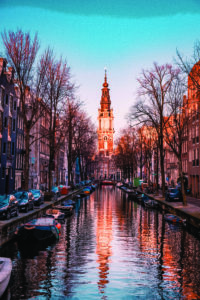
There’s an energy about Amsterdam that makes it one of the most exciting cities to visit—even more since the recently launched high-speed, international rail Eurostar route that connects the city with London. A hotel in Old Centre puts you in walking distance to the city’s main sights, nightlife, and shopping areas. Among the best places to stay is the luxurious fin-de-siècle De L’Europe Amsterdam, an elegant and historic 5-star hotel established 125 years ago and home to some of the city’s finest restaurants, including the two-Michelin-star restaurant, Flore (formerly known as Bord’Eau), the Italian Trattoria Graziella, and brasserie Marie, and the iconic Freddy’s Bar. There too is located the famed Le Spa by Skins Institute, where you can be pampered and nourished, mind, body, and soul. Also, in the heart of the city is the new (as of 2014) location of the former New York landmark hotel, the Waldorf Astoria, now the Waldorf Astoria Amsterdam, a 92-room 5-star luxury hotel, an assemblage of six 17th century canal palaces in the city’s most prestigious neighborhood, the Herengracht, a UNESCO World Heritage site. For a still luxurious but more personal experience, consider Maison Rika, a trendy boutique hotel opened by designer Ulrika Lundgren in 2011. In the heart of the Museum District is the Conservatorium Hotel, situated in walking distance to the Royal Concert Hall, Rijksmuseum, Van Gogh Museum, Vondelpark, and Amsterdam’s popular shopping district. The hotel is a dichotomy—on the outside, one of the city’s most historic architectural gems and inside, a modern, interior design masterpiece. The 129 rooms and suites include stateof- the-art, in-room technology, luxury linens, and private bars. What’s more all guests have complimentary access to the hotel’s Akasha Holistic Wellbeing spa. Dine at the hotel at Chef Schilo Van Coevorden’s award-winning restaurant, Taiko. If you were a wild child of the Sixties and want to relive a touch of nostalgia, ask for Room 702 at the Hilton Amsterdam, located in the upmarket Nieuw Zuid district. This the “John and Yoko Suite,” made infamous by the couple in 1969, where they held their famous “Bed-in for peace.”
There is no lack of fine dining in Amsterdam. Among the most popular is Jansz, chef Jeroen Robberegt’s take on classic cuisine with a modern twist. De Kas showcases the finest, freshest, farm-to-table produce and it’s easy to see why: the restaurant is actually a greenhouse. For the freshest fish try Stork, a cavernous former factory on the banks of the River IJ. A free shuttle ferries you there, where you can watch the busy river traffic go by while enjoying lobsters, oysters, and the “catch of the day” that only hours before, were underwater. For a touch of splendor, sup at Restaurant de Plantage, located in a 19th century conservatory, overlooking the city zoo. And if it’s brunch you’re after, eat at Bakers & Roasters, Amsterdam’s brunch pioneers, where you can enjoy a “Kiwi brekkie,” fantastic coffee, a full English breakfast, or Huevos Rancheros.
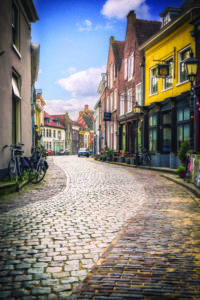
One thing to keep in mind: Amsterdam is a city of romance. Arrange for you and your lover to take a romantic canal boat tour by day or a luxury dinner cruise by night or choose to explore the city by tandem bike (everyone gets around by bicycle) on your own or take a 3-hour guided bike tour with Amsterdam International-Group Historical Bike Tour. Go to the food shops and put together a romantic picnic you can enjoy in Vondelpark, Amsterdam’s 47-hectares public park with its lovely greeneries, lakes, and gardens. Take a chocolate tour at Chocolicious, one of a number of small chocolate shops where the makers show you how the most famous chocolate in the world is made. Take a day trip to Bollenstreek, Holland’s Flower Bulb Region, where tulips are grown in every shade and color or take a tour of the countryside to the neighborhood of Zaanse Schans, to see the windmills and the well-preserved homes.
Spanish physician and author Felix Marti-Ibanez wrote, “In Amsterdam, the water is the mistress and the land the vassal. Throughout the city, there are as many canals and drawbridges as bracelets on gypsy’s bronzed arms.” Go to Amsterdam and feel her embrace.
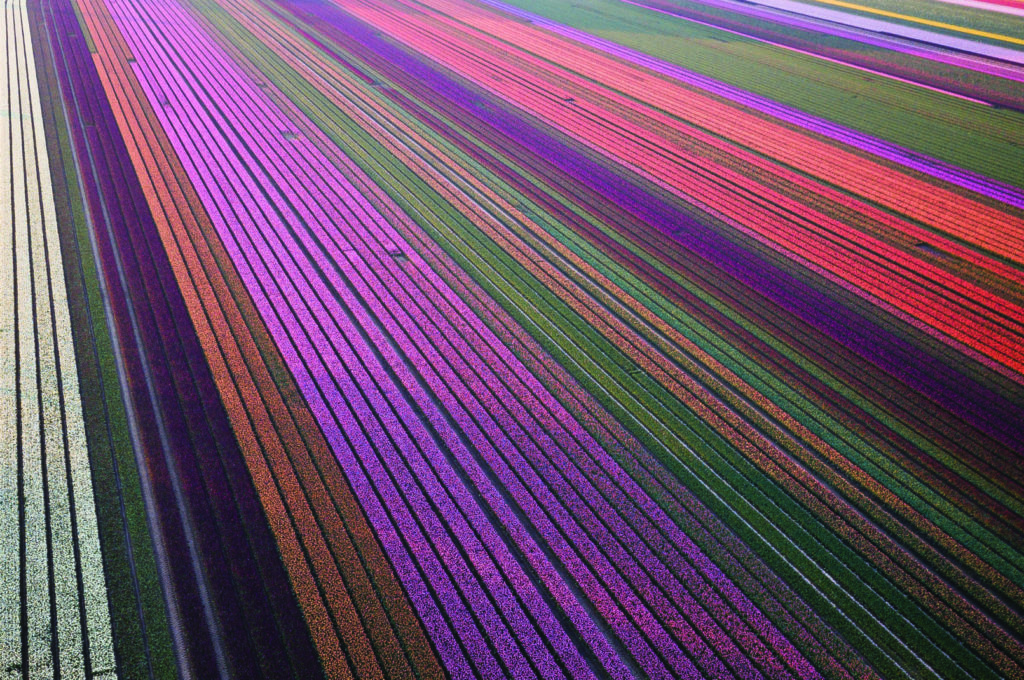
While all art roads lead to Amsterdam, there is Rotterdam, renowned for its art galleries and some fine museums, such as the Museum Boijmans Van Beuningen, one of the top three museums in Holland. Presently closed for renovation, the museum boasts a collection of more than 151,000 works of art, significantly its important collection of surrealist works. (Many can be viewed online at www.boijmans.nl)
The Het Nieuwe Instituut, part of the Museumpark which merges the Netherlands Architecture Institute, the Netherlands Institute for Design and Fashion, and the e-culture Institute Virtueel Platform, for a total immersive art experience.
But Rotterdam’s most popular attraction is its street art and numerous galleries that line the Witte de Withstraat, the hippiest street in the city with its array of bars, restaurants, hotels, and clubs.

Netherlands’ capital city, The Hague (“the count’s wood”), is the international seat of government that serves as host to the International Court of Justice and International Criminal Court. Located on the western coast of the Netherlands on the North Sea, The Hague has been a world center for educating artists and designers since the Royal Academy of Art (KABK) was established there in 1682 and continues to advocate and offer educational excellence for the emerging artist. Among the museums in the city is the Escher in Het Paleis (“Escher in the Palace”), dedicated to the work of Holland’s most famous graphic artist, M.C. Escher (1898-1972), the Kunstmuseum Den Haag, celebrated for its collection of large works by Dutch painter and art theoretician Piet Mondrian (1872-1944), which is the largest in the world; and between the end of September and beginning of October each year, “ART The Hague,” a contemporary outdoor art fair displays the art of top international artists and offerings from 50 galleries.
But the finest art of all is what you yourself see with your own eyes— just as Holland’s great artists—when you take in the pastoral countryside, bustling humanity in its city streets, and provocative people that inspired them to paint their masterworks. Go to the Netherlands, for sure. But when you do, open your eyes, heart, senses, and mind to thoroughly experience the sights, sounds, and beauty this ancient, magnificent country has to offer.
By Gwendolyn Kipling


